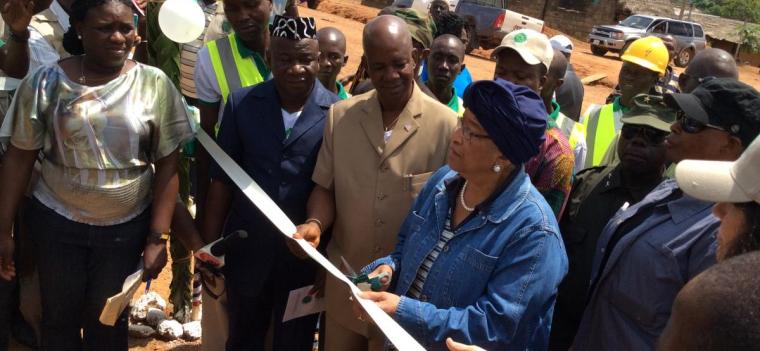News
Story Highlights
- At less than 2%, Liberia has one of the world’s lowest rates of electrification. Expanding access to reliable and affordable electricity, particularly to the rural poor, is one of Liberia’s topmost priorities.
- Over the past decade, ESMAP has provided support to establish Liberia’s Rural and Renewable Energy Agency and to help the country expand the use of local renewable sources of energy to increase energy access.
- These activities have helped to inform the $27 million Liberia Renewable Energy Access Project—the first World Bank-supported energy access project outside the capital city of Monrovia in post-conflict Liberia.
A Brighter Energy Future for Liberia
August 29 2016
Liberia is a low-income country in an energy transition. Currently, energy consumption is dominated by biomass with less than 2% of rural population having access to electricity—the lowest rate of electrification worldwide. However, post-conflict Liberia’s population is growing along with a demand for modern energy services. Improved electricity services are urgently needed to support the country’s economic transformation and improve human development and livelihoods.
Expanding access to reliable and affordable electricity, particularly to the previously neglected rural poor, is one of Liberia’s topmost priorities as set forth in its Agenda for Transformation 2012-2017.
While most of Liberia’s pre-existing infrastructure has been destroyed by 14 years of war, the country has high domestic potential for developing wind, solar, and hydroelectric energy.
The World Bank’s Energy Sector Management Assistance Program (ESMAP), through the Africa Renewable Energy Access Program (AFREA), has provided support to the Government of Liberia in its efforts to increase access to electricity in an affordable, sustainable, and environmentally friendly manner by fostering the use of the locally available renewable energy sources.
Over the past decade, ESMAP has supported two overlapping and complementary projects in Liberia. In the first project, Catalyzing Rural and Renewable Energy (2009-2014), the Bank helped to design and establish the Rural and Renewable Energy Agency (RREA), officially launched by President Ellen Johnson-Sirleaf in 2010. RREA focuses on commercial development and supply of modern energy services to rural Liberia with emphasis on utilizing available local renewable energy resources. Subsequently, the project support focused on developing the Agency’s financial, administrative, technical, environmental and procurement guidelines, as well as strategic planning capabilities. Specifically, support focused on developing legislation, recruiting and training staff, and renovating a building in downtown Monrovia that now serves as the RREA’s headquarters
Rural electrification activities under this project supported the design of two pilots. One pilot focused on designing the strategy to stimulate the rural market for solar products through a technical and financial facility by bringing quality-certified solar PV equipment to rural Liberia. The other pilot was a “learning-by-doing” activity to develop a rehabilitation plan for the long-abandoned Yandohun micro-hydropower plant (60 kW). The initial assessment studies began in May 2009, and the plan itself proposed to double the plant’s capacity to ultimately enable the townspeople to pursue and maintain new enterprises.
The second project, the Electricity System Enhancement Project (2011-2014), implemented the Lighting Lives of Liberia initiative, providing technical and financial support to PV retailers to facilitate a commercial market for portable solar-PV lighting devices while making these products more affordable to the local market. The initiative resulted in 20,000 quality-certified solar PV products sold, effectively jump-starting the private market for solar PV products. Simultaneously, implementation of the rehabilitation plan of the Yandohun micro-hydroelectric plant was begun, which connected over 150 homes or roughly 2,000 people to electricity for the first time in a generation.
Together, these activities created an institution capable of preparing and implementing the first World Bank-supported energy access project outside the capital city of Monrovia in post-conflict Liberia. The Liberia Renewable Energy Access Project ($27 million), comprised of a Strategic Climate Fund Scaling Up Renewable Energy Program grant ($25 million) and an International Development Association credit ($2 million), aims to establish a mini hydropower plant in Lofa County—the area most harshly hit by the 2014 Ebola outbreak—that would connect roughly 50,000 people to the grid. The project will also provide an additional 100,000 people nationwide with access to stand-alone solar systems and products.
Learn more about the Africa Renewable Energy and Access program (AFREA).
